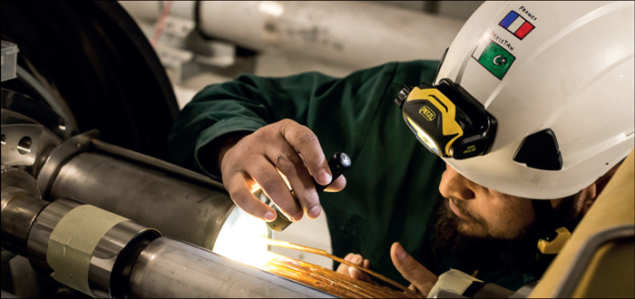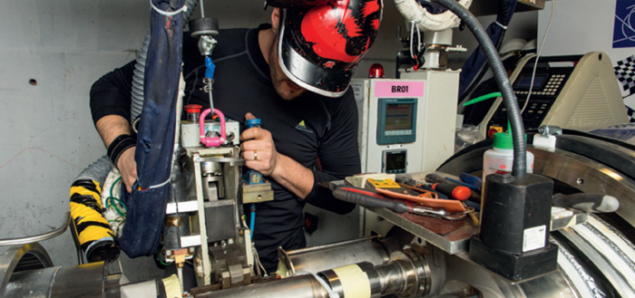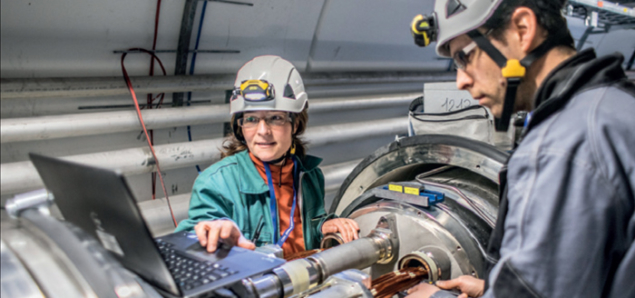
Image credit: Michael Struik/CERN.
When the shift crew in the CERN Control Centre extracted the beams from the LHC on 14 February last year, it marked the beginning of the first long shutdown, LS1, not only for the LHC but for all of CERN’s accelerator complex, after an unprecedented three years of almost continuous running. By the end of last summer, the programme for LS1 had already reached some key milestones. Now, with the cooling of the LHC to begin in May and the restart of the Proton Synchrotron (PS) and Super Proton Synchrotron (SPS) planned for later this year, LS1 is well on schedule.
Throughout LS1, the Superconducting Magnets and Circuits Consolidation (SMACC) project has been responsible for opening interconnections between the LHC magnets for the series of operations needed for magnet-circuit consolidation. A major objective has been to install a shunt on each splice, straddling the main electrical connection and the busbars of the neighbouring magnets. This is to avoid the serious consequences of electric arcs that could arise from discontinuities in the splices.
Despite the complexity of the work on the 27-km-long LHC, there has been excellent progress, with SMACC teams working on different sectors of the accelerator in parallel. By October, the outer “W” sleeves had been removed from the equivalent of seven of the eight sectors, and leak tests were in progress in several sub-sectors. A month later, the first SMACC team had arrived in sector 4-5 and with the opening of the “W” bellows had completed the full tour of the LHC. One-third of the shunts were by then in place and the closure of internal sleeves had begun in sector 7-8. On 28 November, CERN’s director-general, Rolf Heuer, was present for the welding of the last W sleeve in sector 6-7, and expressed his appreciation to the teams involved in the LS1 work. By mid-February, 80% of the interconnections had been consolidated and 85% of the 27,000 shunts had been installed.

Image credit: CERN-PHOTO-201403-045 – 04.
On 15 January, the first pressure tests began in sector 6-7, after all of its vacuum subsectors had been closed and tested. The objective was to check the mechanical integrity and overall leak-tightness of the sector by injecting it with pressurized helium. The tests were a success. Next, the cryogenic teams prepared the sector for new electrical quality-assurance tests at ambient temperature, which were also successful. Two weeks of intensive cleaning followed to flush out any dust and dirt from the repair and consolidation work.
Elsewhere around the LHC, X-ray testing has been used to look for any faults in the machine’s cryogenic distribution system, and 1,344 DN200 safety valves have been installed to release helium in the event of pressure build-up. Compensators on the LHC’s cryogenic distribution lines have been replaced, as has a faulty RF cryomodule. Tests on the back-up electrical supply have also been completed.

Image credit: CERN-PHOTO-201401-013 – 23.
Meanwhile, at the PS Booster, a new beam dump and its shielding blocks were installed from October onwards. At the PS itself, the cooling and ventilation system – dating back to 1957 – was replaced with a new ventilation system to aerate radioactive areas more efficiently. At the same time, testing of the newly installed access system was underway. By late October, consolidation of the seven main PS magnets had begun, with magnets being removed from the beam line and delivered to the magnet workshop, to be worked on by a specialized team from Russia.
Thanks to the know-how, motivation and commitment of hundreds of professionals at CERN – as well as teams from member states and beyond – the LHC, its experiments and its injectors are on course to be ready to start the next LHC run in January 2015.








